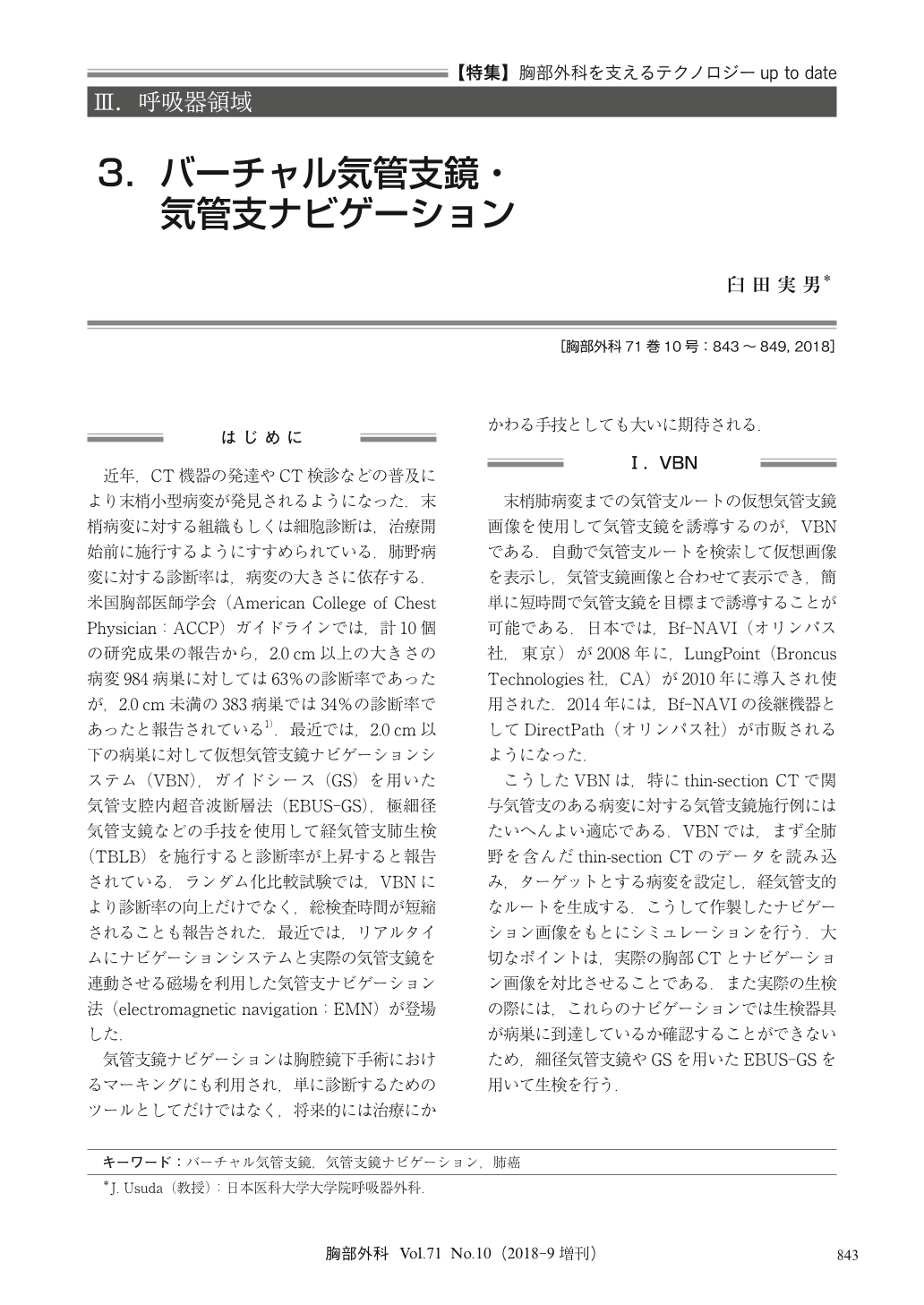Japanese
English
- 有料閲覧
- Abstract 文献概要
- 1ページ目 Look Inside
- 参考文献 Reference
近年,CT機器の発達やCT検診などの普及により末梢小型病変が発見されるようになった.末梢病変に対する組織もしくは細胞診断は,治療開始前に施行するようにすすめられている.肺野病変に対する診断率は,病変の大きさに依存する.米国胸部医師学会(American College of Chest Physician:ACCP)ガイドラインでは,計10個の研究成果の報告から,2.0 cm以上の大きさの病変984病巣に対しては63%の診断率であったが,2.0 cm未満の383病巣では34%の診断率であったと報告されている1).最近では,2.0 cm以下の病巣に対して仮想気管支鏡ナビゲーションシステム(VBN),ガイドシース(GS)を用いた気管支腔内超音波断層法(EBUS-GS),極細径気管支鏡などの手技を使用して経気管支肺生検(TBLB)を施行すると診断率が上昇すると報告されている.ランダム化比較試験では,VBNにより診断率の向上だけでなく,総検査時間が短縮されることも報告された.最近では,リアルタイムにナビゲーションシステムと実際の気管支鏡を連動させる磁場を利用した気管支ナビゲーション法(electromagnetic navigation:EMN)が登場した.
Recently small peripheral lesions have been discovered due to development of computed tomography (CT) instruments and dissemination of CT examination etc. Histological or cytological diagnosis for peripheral lesions is recommended to be performed. The diagnostic yield for peripheral pulmonary lesion depends on the size. Transbronchial lung biopsy (TBLB) was developed using techniques such as navigation system (vitual bronchoscopic navigation:VBN), endobronchial ultrasonography (EBUS) using guide sheath (GS), extremely small bronchoscope and the like for lesions of 2.0 cm or less.
VBN is a method in which virtual bronchoscopy images of the bronchial path to the peripheral lesion are produced and used as a guide to navigate the bronchoscope. In the randomized controlled trial, it was reported that VBN not only improves the diagnostic rate but also shortens the total examination time.
The American College of Chest Physician (ACCP) guidelines recommend the use of EBUS-GS, VBN for the bronchoscopic diagnosis of peripheral pulmonary lesions. Bronchial navigation method using a magnetic field (electromagnetic navigation:EMN) to link the navigation system and the actual bronchoscope in real time has appeared. This new technique, electromagnetic navigational bronchoscopy (ENB) promises accurate navigation to peripheral pulmonary target lesion.
Bronchoscopic navigation is also used for marking in thoracoscopic surgery, and it is greatly expected not only as a tool for simply diagnosing but also as a treatment technique in the future.

© Nankodo Co., Ltd., 2018


